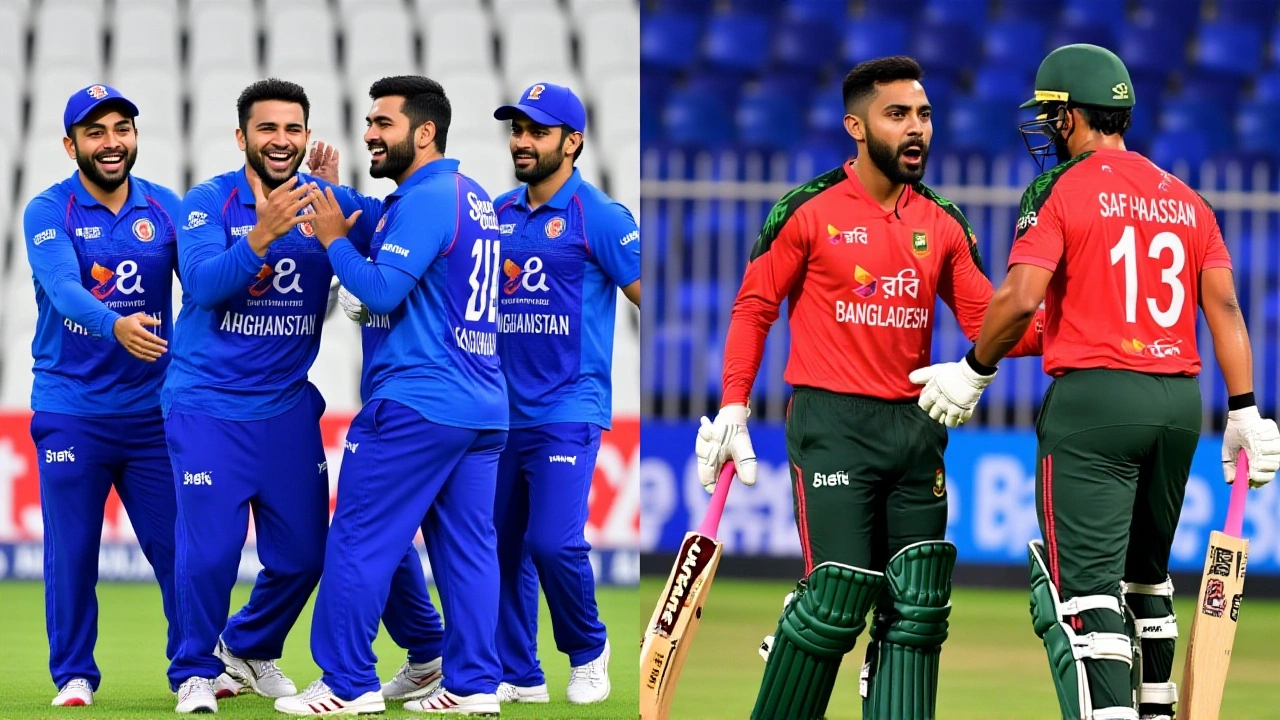Afghanistan T20I
When talking about Afghanistan T20I, the Twenty20 International games played by Afghanistan's national side, governed by the International Cricket Council. Also known as Afghanistan Twenty20 International, it represents the country's fastest‑growing cricket format and a key stepping stone for players chasing global recognition.
The International Cricket Council (ICC), the global governing body that sets rules, rankings and tournament structures for cricket oversees every Afghanistan T20I fixture, ensuring standards for ball quality, pitch preparation and player eligibility. Meanwhile, the Afghanistan national cricket team, the squad representing Afghanistan in all international formats, from Tests to T20s adapts its line‑up to suit the high‑tempo demands of the Twenty20 game.
Why Afghanistan T20I matters
Afghanistan T20I encompasses the fast‑paced Twenty20 format, which packs 20 overs per side into a roughly three‑hour spectacle. Because the format is short, fans get quick results and teams can experiment with aggressive batting and inventive bowling. The format also requires strict adherence to ICC regulations, from power‑play rules to field‑placement limits, making every match a test of tactical discipline.
One major impact of Afghanistan T20I matches is on player rankings. Strong performances influence individual ICC T20 rankings, boosting players’ market value and opening doors to franchise leagues like the IPL or CPL. The team's success also drives cricket development back home, encouraging youth participation and government investment in facilities.
From a strategic angle, Afghanistan T20I includes specialized roles: power‑hitters at the top of the order, death bowlers who can defend the final overs, and all‑rounders who shift momentum with a single over. Coaches often focus on strike‑rate optimization and dot‑ball reduction, metrics that directly affect match outcomes.
Home venues like the Kabul International Cricket Stadium (not officially built yet but planned) and the Sharjah Cricket Stadium in the UAE provide contrasting conditions. Playing at high altitude in Kabul favors fast bowlers, while Sharjah’s flat pitches aid big hitting. These venue differences shape squad selection and game plans, illustrating how external factors intertwine with team tactics.
Fan engagement is another crucial piece. Social media chatter spikes whenever Afghanistan T20I fixtures are announced, and live‑stream numbers show a growing global audience. This enthusiasm fuels sponsorship deals, which in turn fund grassroots programs, creating a virtuous cycle between performance and resource allocation.
Statistically, Afghanistan’s T20I batting average hovers around the mid‑30s, while the bowling economy rates sit near 7.5 runs per over. These figures reflect a balanced side that can both chase and defend modest totals. Analysts often break down these numbers by player roles, offering insights into who excels under pressure.
Looking ahead, upcoming qualifiers for the ICC T20 World Cup will test the squad’s depth. Young talents from the Under‑19 setup are already knocking on the senior door, promising to inject fresh energy. Keeping an eye on emerging players and their performances in domestic leagues will be key to predicting Afghanistan’s future success.
All of this context sets the stage for the collection below. Below you’ll find match reports, player interviews, statistical deep‑dives and everything else you need to stay on top of Afghanistan T20I action. Dive in and see how the team’s journey unfolds across each thrilling encounter.

Bangladesh rallied from 6/9 to beat Afghanistan by four wickets at Sharjah, with Emon's 54 and Hasan's 51 sealing the chase and keeping series hopes alive.
Read More